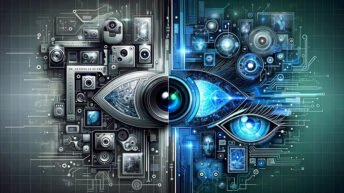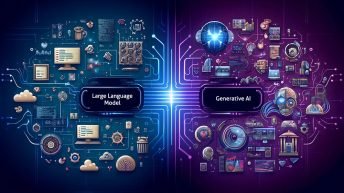
Artificial Intelligence
Enter the fascinating world of AI
Welcome to the World of AI
Welcome to our dedicated space for exploring Artificial Intelligence (AI), a transformative force reshaping how we live, work, and think about the future. At its core, AI involves creating systems and software that can reason, learn from experience, make decisions, and even understand human languages. From smartphones and smart homes to industries like healthcare and finance, AI is becoming an integral part of our daily lives.
Understanding the Basics
What is Artificial Intelligence?
Artificial Intelligence is a branch of computer science focused on building machines capable of performing tasks that typically require human intelligence. These tasks include problem-solving, recognizing patterns, understanding language, and decision-making.
Developed through algorithms and data, AI adapts through progressive learning algorithms to let data do the programming. AI can do these tasks faster and more accurately than human beings in many cases.
Types of AI
AI can be categorized into three types:Artificial Narrow Intelligence (ANI): Also known as Weak AI, ANI systems are designed to solve a single task and operate within a limited context. Examples include chatbots and personal assistants like Siri and Alexa.
Artificial General Intelligence (AGI): AGI, or Strong AI, refers to systems that possess the ability to understand, learn, and apply intelligence across a broad range of tasks, matching or surpassing human-level responsiveness. AGI remains largely theoretical at this stage.
Artificial Superintelligence (ASI): An extension of AGI, ASI represents future AI systems that could outperform the best human brains in practically every field, including scientific creativity, general wisdom, and social skills.
Exploring Core AI Technologies
Machine Learning (ML): AI systems are often powered by machine learning, which involves teaching computers to learn from data, identify patterns, and make decisions with minimal human intervention.
Deep Learning: A subset of ML, deep learning uses neural networks with many layers (hence "deep") to analyze various factors of data. It’s the technology behind voice control in consumer devices and more sophisticated image recognition.
Natural Language Processing (NLP): NLP technologies enable computers to process and understand human language, facilitating interactions between humans and machines. ChatGPT is an example of how natural language processing (NLP) and machine learning combine to enable sophisticated human-computer interactions.
AI in Action
AI's applications are vast and growing. In healthcare, AI performs tasks such as diagnosing diseases faster than medical professionals. In the automotive industry, it powers the development of self-driving cars. In finance, AI detects fraudulent transactions and automates trading activities. Each application not only showcases AI's capabilities but also its potential to revolutionize industries.
Ethical Aspects of AI
As AI technology evolves, so does the need to address the ethical dimensions of AI. Issues such as data privacy, AI bias, and the impact of AI on employment are critical considerations. Ensuring AI is used responsibly involves transparent data use, understanding AI decision-making processes, and maintaining human oversight where necessary.
The Future of AI
The future of AI is both exciting and unpredictable. Innovations in AI could lead to breakthroughs in solving complex medical challenges, environmental conservation, and more. However, as AI becomes more advanced, preparing for and managing potential impacts on society is essential.



